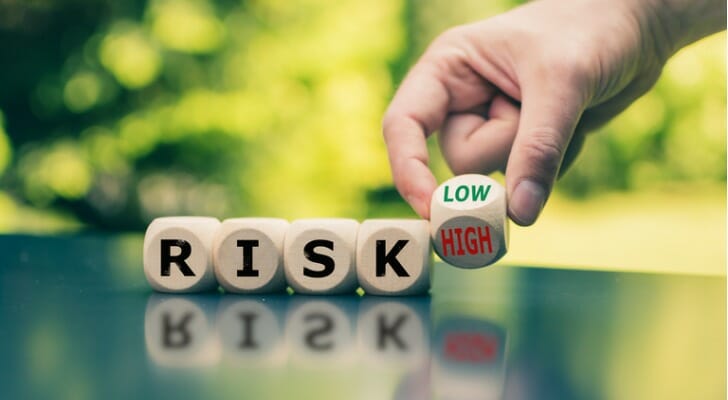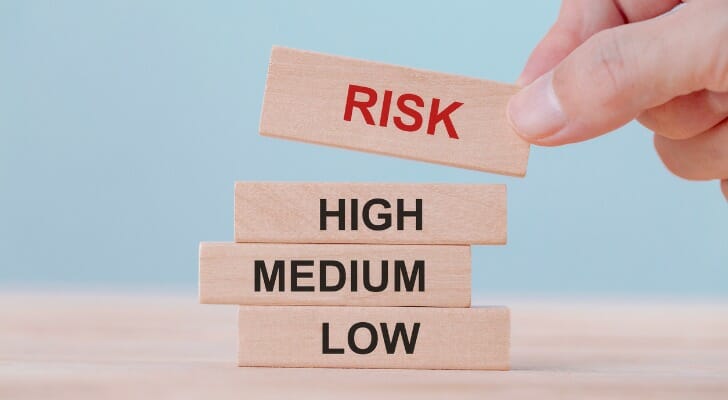Risk premium is the added return that investors expect to earn from an asset such as a share of stock that carries more risk than another asset such as a high-grade corporate bond. The risk premium is what encourages investors to purchase riskier assets. Without a risk premium, investors would have no reason to put their money into assets that expose them to a greater chance of loss. Be sure to use the experience and insights of a financial advisor if you find that your risk tolerance is changing and so you need to reassess your portfolio’s risk profile.
When the returns for an investment seen as riskier are lower than for another, safer investment, the risk premium has turned negative. One type of a negative risk premium is a yield curve inversion, which generally refers to the situation when a 10-year Treasury bond pays less interest than a two-year Treasury security. The appearance of a yield curve inversion is often seen as a sign that an economic recession may be imminent.
Equity Risk Premium
The equity risk premium is the name for the extra return expected of investments in the shares of public companies. In the U.S., the equity risk premium has typically been around 5% to 6% in recent years. This means an investment in the stock market is supposed to pay approximately 5% to 6% more than the so-called risk-free rate of return expected from investments in U.S. government bonds.
The equity risk premium fluctuates with changes in the economy, inflation outlook, interest rates and monetary policy. When economic growth slows and the outlook for the stock market is gloomy, the equity risk premium is likely to increase. Similarly, a change in stock market volatility can increase the risk premium, as can an expectation of higher inflation.
If Federal Reserve policymakers act to raise interest rates, or take another action to tighten monetary policy, that can make equities look riskier and increase the equity risk premium. Changes in the circumstances of individual companies also can change the risk premium. When a company appears close to filing for bankruptcy, for instance, an investment in its shares will be expected to carry and higher risk premium.
Changes in the other direction on any of these factors can reduce risk premiums. Lower inflation, lower interest rates, easier monetary policy, less volatility and an improvement in an individual company’s prospects usually indicate a decline in the equity risk premium.
Risk Premium Uses
 Different types of investors demand different risk premiums depending on their risk tolerance, time until retirement and other factors. A 40-year-old investor planning for retirement would likely demand a lower risk premium than one who is 60 and will retire soon. An investor who has a higher risk tolerance also will be less sensitive to risk premium. A speculator may be almost insensitive to risk. The varying level of risk premium demanded by different investors influences their choices of assets and the type of investments they are willing to make.
Different types of investors demand different risk premiums depending on their risk tolerance, time until retirement and other factors. A 40-year-old investor planning for retirement would likely demand a lower risk premium than one who is 60 and will retire soon. An investor who has a higher risk tolerance also will be less sensitive to risk premium. A speculator may be almost insensitive to risk. The varying level of risk premium demanded by different investors influences their choices of assets and the type of investments they are willing to make.
Risk premium can be used to gauge the riskiness of different investments. Even if nothing is known about a specific investment’s risk, if it pays a higher return than other investments, it can be considered more risky. So investors can use risk premium to decide which investments are well-suited to their individual risk tolerance.
Cash is viewed as the least risky asset. U.S. government bonds carry marginally more risk than cash and pay a small risk premium in the form of the interest they earn. Corporate bonds pay somewhat higher interest than government bonds, reflecting the fact that they are somewhat risker. Equities are the riskiest major asset class and are expected to earn greater returns.
Figuring Risk Premium
Risk premium is expressed as a percentage that represents the excess return an investment generates compared to a less risky alternative. To figure it, subtract the return earned by the less risky investment from the riskier investment.
For instance, since 1972, U.S. Treasury 10-year bonds have returned a compound annual growth rate of approximately 7.2%. Stocks have returned about 10.5%. Subtracting 7.2% from 10.5% produces 3.3%. That is the risk premium for investing in stocks instead of 10-year Treasuries.
Bottom Line

Risk premium is the name for the extra return investors expect from riskier investments. Equity risk premium is the name for the increase in return that stocks historically have generated compared to low-risk investments such as U.S. Other asset classes, such as emerging market equities, real estate investment trusts and corporate bonds, have their own risk premiums. Risk premium helps guide investors toward assets that fit their own risk tolerance.
Tips on Investing
- A financial advisor can help you use risk premium to select investments with a risk profile that matches your own risk tolerance. Finding a financial advisor doesn’t have to be hard. SmartAsset’s free tool matches you with financial advisors in your area in five minutes. If you’re ready to be matched with local advisors who will help you achieve your financial goals, get started now.
- Make sure you run the appropriate numbers through a retirement calculator to confirm your estimates of what you’ll need after you stop earning money and how much you can safely withdraw from accumulated funds.
Photo credit: ©iStock.com/picture, ©iStock.com/GaudiLab, ©iStock.com/Fokusiert
